AI-Based Visual Inspection: Enhancing The Automotive Industry
- By Juili Eklahare
- May 14, 2022

Artificial intelligence (AI) is an evolving technology that is still growing, but it is undoubtedly getting better.
For all we know, factories might not even need lights 20 years later, because most of them will be operated by AI. We see a lot of R&D happening within the AI framework, giving good results. Besides, we see newer frameworks coming in.
AI-based visual inspection, too, has been growing by leaps and bounds, reshaping automotive inspection. It helps examine detailed defects in vehicles, providing automotive OEMs the opportunity for accuracy and cost-savings.
One such company focusing on AI-based visual inspection is Lincode Labs, whose AI-backed visual inspection solution, Lincode Visual Inspection System (LIVIS), is its current focus. The company was started with complete research and understanding of the top challenges that manufacturers globally face. After interviewing close to 100 customers, 86 percent of them said that quality inspection happens to be their biggest challenge.
“We were intrigued by this and went to various quality inspection people and identified the technology they were using,” says Rajesh Iyengar, Founder and CEO, Lincode Labs, and goes on, “We went on to find out that the technology hasn’t changed for two decades and there were a lot of false calls in it. That’s when Lincode stepped in and built a product around specific challenges focused on the automotive industry.”
Automotive OEMs, too, look at specifically reducing these false calls and improving productivity, which Lincode has helped solve through its AI-backed visual inspection solution. “The industry standards were 150 to 200 false calls per million inspections. So, in our case, we are doing it in zero to four parts per million,” Iyengar cites.
Iyengar further reveals that due to this, 80 percent of their customers are repeat orders. “That’s because they are completely happy with the inspection process and the way the inspection is automated,” he mentions.
LIVIS
Traditional vision systems cannot catch up with AI, as Iyengar says. He avers, “LIVIS stands out because we have built it as a platform. The scalability becomes easier if you’re going to deploy it across multiple factories and locations. But also, the foremost important thing is that it is completely made as a product. Thus, AI is commoditised. With the LIVIS platform, we can bring the cost and time to deployment down.”
Lincode’s role in the automotive industry
What’s interesting is that even if Lincode caters to the manufacturing industry as a whole, it first addressed the automotive industry. The company researched the market size of various manufacturing companies and the automotive industry took the top spot, with close to USD 542 billion of global value.
“We started with the automotive industry but pivoted later,” Iyengar tells us and continues, “So, instead of looking at just the automotive or any other industry, we turned our attention to steel, metal, plastic, glass etc. We basically went to the surface and saw how steel and metal are produced today. Whether it’s a CNC machining or forging or casting process, these are major processes used for any industry across the globe involving steel and metal. We understood that steel and metal are dealt with in the same way globally. Therefore, it made sense to go to the surface and into these kinds of defects specifically, and then generalise that and start building a model towards it. This, plus making AI as a product, has made deployment easier across the globe.”
R&D centre in Bengaluru
Lincode recently opened a new R&D centre in Bengaluru, which also has a significant role to play in deploying the company’s solution across the world.
Stressing on the fact that evolving models are important in AI, Iyengar states, “It’s a continuous process; it’s not that you just build a model and you’re set. We have a big roadmap in the product development, and the Bengaluru R&D centre is going to play a major role in that. We are going to conduct deep research with various data collected across the globe and do various testing with that.”
Staying ahead
What’s more, Lincode recently closed a funding round in December last year. Catering to a constantly evolving industry like the automotive, Lincode, too, strives to make sure that its visual inspection solution stays ahead and is put to use. “There are about more than 600 parts in a car and each part is segregated – like the structure, wiring, engine components etc.,” Iyengar shares and continues, “These segregations are made so that we can target the sector of the product. For example, when it comes to engine blocks, there is a specific model with a huge data set around engine blocks. This is how we stay ahead of competition.” Iyengar also adds that their trials with various use cases made them understand that inspection alone is not important but also the way the inspection is done.
Essential skill sets for AI vision systems
Leveraging AI-based visual inspection solutions in the automotive industry is bound to increase productivity, and the cost of labour will also come down because of automation. “Today, most manufacturers use secondary inspection, which can be cut off straight away. This will improve their productivity and also reduce the risk of delays,” Iyengar enlightens.
Moreover, AI vision systems come with their share of essential skill sets to bring out the best in the automotive industry. Iyengar states that, in general, skilling is required for the factory people. “This could be at various levels,” he puts across and adds, “It could be for the operators, the IT administrator or even the software development team. Hence, deep training is required, which can be somewhat cumbersome because it could be a bit challenging for the operator. So, an IT person might be needed in order to help the operator every time there is a downtime.”
Covid-19 and AI-backed visual inspection
Such training or skills could certainly come in handy, because Iyengar claims that the need for AI-backed visual inspection solutions in the automotive industry has increased since the Covid-19 pandemic. “Unplanned shutdowns happened during Covid, because of which employees could not report and manufacturing could not continue properly,” he responds and adds, “Hence, a lot of investments are happening because of this. In fact, even now, a lot of employees are still not reporting and the labour problem has become global. It has become tough to get skilled workers. This has led to the adoption of autonomous manufacturing for automotives, where AI is going to play a big role.”
Meeting industry requirements
For an industry that is an economic force globally, AI-based visual inspection is certainly meeting the high-quality requirements of the customers of the automotive sector. Plus, we already see companies like Volvo using the technology. Safety surpasses any requirement, and this requirement can be fulfilled if quality is top-notch. And quality will be at its best if automotive manufacturers can perform production quality inspections in the most efficient way. (MT)
Kazam Clocks INR 400 Million Revenue For FY2025, Targets INR 1 Billion Revenue In Q4 CY2025
- By MT Bureau
- January 02, 2026
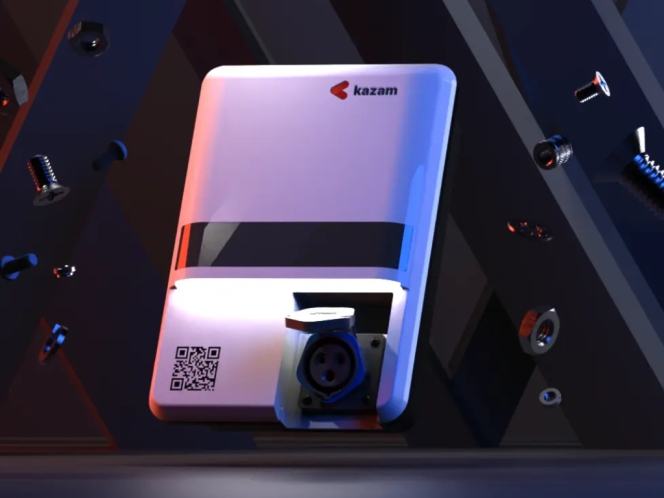
Kazam, an electric vehicle (EV) charging and energy-management platform, has reported revenue of INR 400 million for FY2025, which it claimed is a 3.5-fold increase YoY.
Furthermore, Kazam expects to reach an annual revenue run-rate of INR 1 billion for Q4 CY2025.
At present, the platform has integrated more than 120,000 chargers and facilitated over 7 million charging sessions. Over the last 6 months, charger integrations rose by 76 percent, while energy sessions increased by 60 percent.
The platform manages over 9,000 MWh of energy transactions monthly, supporting more than 100 charger brands. Kazam's network covers residential societies, workplaces, fleet depots, bus operations and public charging networks.
Currently, Kazam has established partnerships with 14 major brands such as Maruti Suzuki India, as well as energy providers like ONGC and regional distribution companies (DISCOMs). Its infrastructure footprint includes 150 residential associations across Delhi, Bengaluru, Hyderabad and Pune, along with 45 bus depots.
Akshay Shekhar, Co-Founder & CEO, Kazam, said, “India’s EV transition is entering a new phase, from just creating charging availability to building a reliable, intelligent, and interoperable energy layer that the entire industry can depend on. That is the market we have been building. Our growth this year reflects the trust that OEMs, fleets, DISCOMs, and CPOs are placing in a unified, device-agnostic platform that can scale across vehicle categories and geographies. As electrification accelerates, our focus is on enabling India’s EV ecosystem to move from fragmented experiences to a seamless, grid-aware infrastructure that can support millions of daily energy transactions.”
Ram Balasubramanian, CFO, Kazam, said, “India is moving from the ‘availability phase’ of EV infrastructure to the ‘reliability and optimisation phase,’ and Kazam’s growth this year shows we’re creating industry standards along with profit benchmarks. With increasing platform throughput and sustained cost optimisation, we are on track to achieve a INR 1 billion annual run-rate and profitability by early 2026”.
The company has raised USD 19.2 million to date, including a Series B round completed in June 2025. These funds are being used for research and development, geographic expansion into Tier 2 and Tier 3 cities and the development of energy services such as demand response and peer-to-peer energy sharing. The platform provides tools for both individual home charging and enterprise-level fleet management to create a unified energy layer that functions independently of specific hardware manufacturers.
Hyundai Creta Attains Highest Yearly Sales Surpassing 200,000 Units In CY2025
- By MT Bureau
- December 31, 2025

Hyundai Motor India (HMIL) has announced that its popular SUV the Creta has surpassed 200,000 units sales in CY2025.
This figure represents the highest annual sales volume for the vehicle since its introduction. This translates to an average of 550 units sold per day, maintaining the model's position in the mid-size SUV segment with a market share exceeding 34 percent.
Marking a decade on Indian roads, the SUV achieved a compound annual growth rate (CAGR) of over 9 percent between 2016 and 2025. Hyundai Motor India stated that its internal data reveals a shift in buyer demographics, with first-time buyers increasing from 13 percent in 2020 to 32 percent in 2025. Product trends within the range show that variants equipped with a sunroof accounted for over 70 percent of sales in 2025, while diesel powertrains maintained a 44 percent share of total volume.
At present, the Creta can be had with a 1.5-litre petrol, 1.5-litre diesel and 1.5-litre turbo petrol engines, as well as an electric (EV) variant. Transmission choices include manual, IVT, automatic and DCT. The model remains the highest-selling mid-size SUV in the country on a cumulative basis for the period between 2020 and 2025.
Tarun Garg, Managing Director & CEO designate, Hyundai Motor India, said “Hyundai Creta journey in India is nothing short of extraordinary and achieving highest-ever annual sales of more than 2 lakhs units is a proud and defining moment for all of us at Hyundai. It is also the highest selling SUV of our country on a cumulative basis from 2020-2025. Infact, over the past 10 years of its journey in India, Creta’s customer base has grown manifold, transforming it from a capable SUV into a trusted companion for every journey. The brand’s momentum also reflects in the rise of first-time buyers - from 13 percent in 2020 to an impressive 32 percent in 2025. Aspirations of Creta customers have also evolved over the years, with sunroof-equipped variants contributing more than 70 percent of Creta’s sales in 2025. In addition, the diesel powertrain contributes a strong 44 percent share to Creta sales. We are deeply grateful to our customers and dealer partners for making Creta a symbol of Hyundai’s trust, innovation and commitment.”
MapmyIndia Adds Multimodal Public Transport Routes To Mappls App
- By MT Bureau
- December 30, 2025
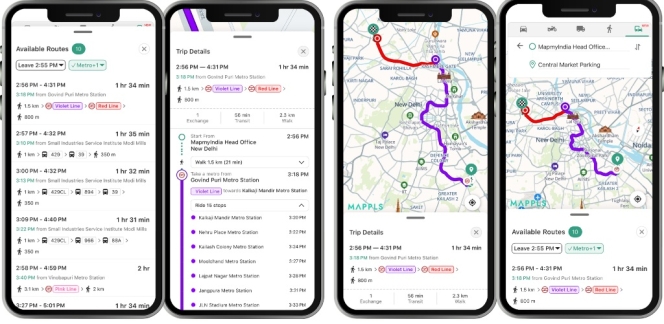
MapmyIndia Mappls has expanded its Mappls App by integrating multimodal public transport routes. The update allows users to access information for metro, rail and bus services within the application.
The feature enables the 40 million users of the platform to view stations, stops and interchange options. The service is currently available in cities including Delhi, Mumbai, Bengaluru, Chennai, Hyderabad and Kolkata, among others. The update is live on iOS and web platforms, with an Android release scheduled to follow.
The public transport data joins existing app features such as turn-by-turn navigation, traffic updates and safety alerts. By combining private and public transport data, the company aims to assist in journey planning and support mass transit adoption to manage urban congestion.
As an indigenous platform, MapmyIndia aligns its mapping data with government guidelines regarding international borders and sensitive establishments. The government sector currently accounts for 20 percent of the company's gross revenue.
Rakesh Verma, Co-Founder, Chairman & Managing Director, MapmyIndia Mappls, said, “The launch of multimodal public transport routes on the Mappls App is a direct outcome of listening to our users. We want the Mappls App to be more inclusive and accessible for every citizen. We are pleased to begin rolling out this feature across select cities and will continue expanding coverage to make public transport more convenient for millions of Indians. As a fully indigenous platform built in India for India, Mappls remains committed to supporting sustainable urban mobility by seamlessly integrating public transport into everyday navigation.”
The company plans to expand the coverage of this feature to additional cities to further integrate public transport into its navigation ecosystem.
REE Automotive, BorgWarner’s Cascadia Motion Partner On Electric Drive Unit Development
- By MT Bureau
- December 30, 2025
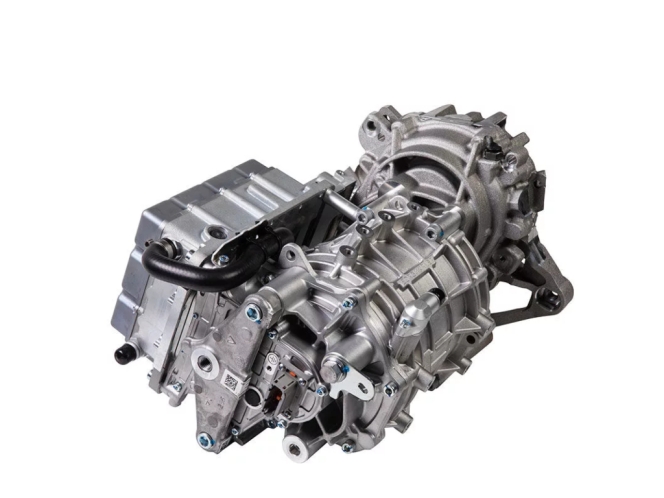
Israel-headquartered REE Automotive has signed a non-binding Memorandum of Understanding (MOU) with Cascadia Motion, a subsidiary of BorgWarner Inc., to develop and manufacture a next-generation electric drive unit (EDU).
The partnership focuses on integrating Cascadia Motion’s iM-125 motor and inverter with REEcorner technology. The resulting EDU is intended for global original equipment manufacturer (OEM) electrification programmes, providing a modular solution for software-defined vehicles (SDVs).
The proposed EDU is designed to support ASIL-D functional safety standards and features a zonal architecture. This system uses centralised control units to replace legacy domain systems, reducing wiring and enabling over-the-air (OTA) updates.
Technical Specifications (at Gearbox Output):
- Motor Type: Permanent Magnet
- Peak Torque (30s): 3000 Nm
- Peak Power: 100 kW
- Gear Ratio: 19.17
- Weight: 54 kg
- Cooling: Water-Glycol
REE plans to grant Cascadia Motion access to its existing assembly lines, tooling and supplier networks to facilitate production. The companies also intend to evaluate market demand for complete SDV solutions, including standalone REEcorner units and chassis control software.
The collaboration occurs as industry research suggests the global EDU market will grow at a compound annual growth rate (CAGR) of 9 percent between 2025 and 2035. The move is aimed at helping OEMs reduce development cycles for electric vehicles through ready-to-integrate hardware.
Joseph McHenry, General Manager, BorgWarner Portland, said, “Integrating Cascadia Motion’s iM 125 drive unit with REEcorner technology bolsters our portfolio of off-the-shelf electric drive solutions, providing our customers with even more flexibility in their electrification programs. This collaboration reflects our commitment to delivering innovative, ready-to-integrate drive units that help OEMs reduce development time and streamline vehicle launch.”
Daniel Barel, CEO and Co-Founder, REE Automotive, said, “We believe that this MoU with Cascadia Motions represents a natural progression of our three-year collaboration and reinforces our mission to accelerate the industry’s transition to software-defined, by-wire mobility. We believe this collaboration positions us to meet global demand at scale while laying the groundwork for next-generation, fully by-wire solutions.”



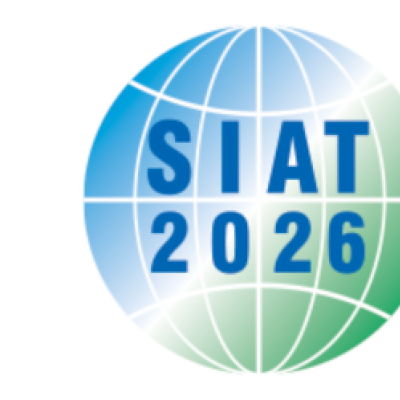
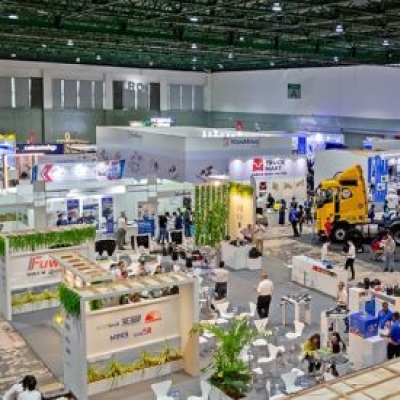


Comments (0)
ADD COMMENT